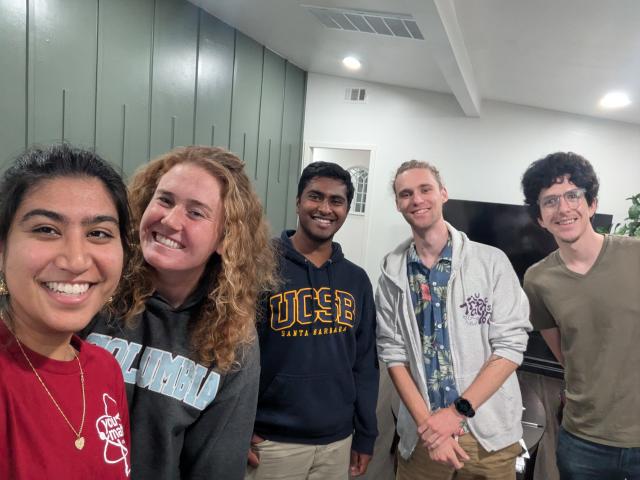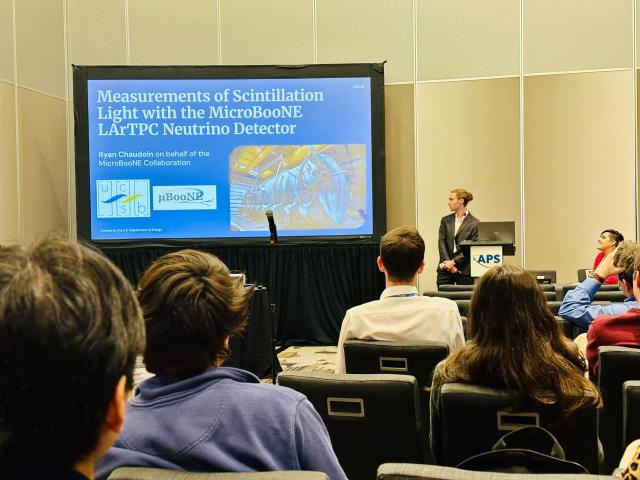CCS Physics Make Their Mark at 2025 APS Global Summit
five students present at a top physics conference

Five CCS Physics students presented at the 2025 American Physical Society (APS) Global Physics Summit, a notable level of participation in recent years. The conference brings together undergraduate and graduate students, faculty, as well as leading industry professionals to form the largest physics research conference in the world. Undergraduates make up the smallest slice of those accepted, with just under 1,000 in attendance. Among those were five students from the ‘26 CCS physics cohort: Jeremy Lauro, Janhavi Singhal, Ryan Chaudoin, Aditya Chezhiyan, and Eliott Schaffer.
For most of the students, the event represented their first time presenting research at a national conference. The experience offered exposure to science communication, professional networking, and a chance to broaden their perspectives alongside like-minded physics professionals and academics.

“They had a fantastic first experience of a large professional conference and are so happy they had the opportunity to attend and present their work,” said CCS Physics Faculty Sathya Guruswamy.
One attendee, Janhavi, presented her work on the Isla Vista Bubble Chamber, a dark matter detector being developed in UCSB’s Lippincott Lab. She recalls a defining moment at the conference: scanning the schedule of events and realizing the immense breadth of the field of physics. “Anything I could think of researching is being explored and there were so many sessions that I had wanted to attend in subfields totally different from my own,” she noted.
The conference also deepened her exposure to her own field of dark matter, revealing new possibilities for her future graduate pathway and feeding her passion for her studies. “As a younger student attending this conference for the first time, I felt the conference was very welcoming and encouraging,” she said. “This made me even more excited to stay in the field.”

Another CCS attendee, Jeremy Lauro, presented research conducted with UCSB Physics Faculty Boris Shraiman on morphogenesis, exploring embryonic development through an information-theoretic lens. In his presentation, Jeremy focused on how gene expression dynamics may provide insight into why certain organisms develop particular shapes.
According to Jeremy, a stand-out moment was connecting with faculty whose work has inspired his own research focus, and who he may consider working with during his graduate studies. “Being able to introduce myself and hear about their research directly was a highlight of the trip,” he said.
“Overall, the conference gave me a clearer perspective on what life in academia can look like and affirmed my interest in pursuing research long-term,” said Jeremy.
CCS attendee Eliott presented his work on building the MilliQan Experiment Slab Detector, a dark matter detector located at the European Organization for Nuclear Research, or CERN, in Geneva. Eliott shared how he designed and developed a calibration module, culminating in its test use on the detector.
“The biggest takeaway for me was the efforts and work that are happening behind the scenes in science,” said Eliott. “The funding issues brought to light gave me a glimpse of the real challenges that scientists face today and the importance of groups like the American Physical Society.”
Four of the five attendees received funding through the Travel Undergraduate Research Fund (TURF). Donor-funded programs such as these allow students to travel for research conferences, exhibitions, and other academic opportunities.